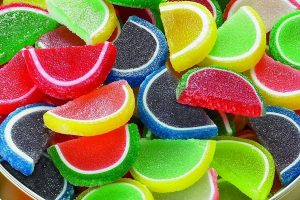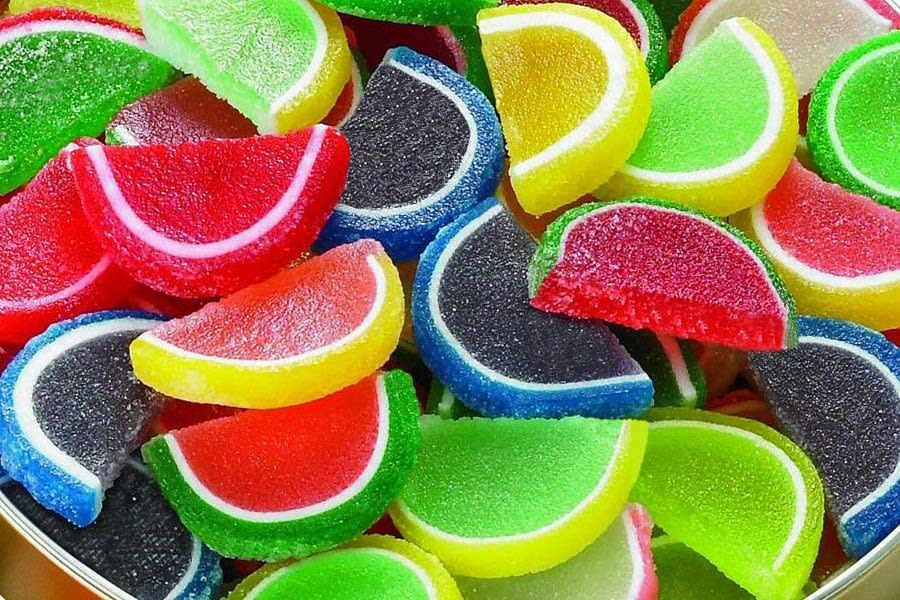
I’m standing in line at the local farmer’s market Friday morning trying to get some really fresh veggies and fruits for shabbos and I observed a woman who was obviously a bubbie watching a obviously overtired, overstimulated and downright cranky 2- to 3- year-old. While the child’s parents were debating the merits of green vs. red vs. yellow pepper for salad, “bubbie” picked up the almost-in-tears toddler and said the magic words I hadn’t heard since my own bubbie passed away. She whispered “Hey sweetie, give me some sugar.” Kisses and hugs ensued (along with a juice box and a cookie and the yellow peppers) and everyone went away happy.
Hearing the phrase “give me some sugar” got me to thinking about, well, sugar and how little most people actually know about it. So, of course, I decided to write about the who, what, why and where of the sweet stuff we all use every day.
Sugar cane is said to have originally been traded as currency from Polynesia to India and from there throughout the Mediterranean. Christopher Columbus is credited with bringing it to the new world where sugar cane plantations proliferated on many Caribbean islands. Up until about 125 years ago sugar was very expensive and not readily available in areas it wasn’t grown so, to most, honey was typically the sweetener of choice. Sugar became more available and affordable with the upswing in growth of the sugar beet. Today, about 30% of the world’s sugar comes from beets and 70% from cane. Today sugar cane is grown all over the world in places like the U.S., Mexico, South America, Africa, Southeast Asia parts of Australia. Sugar beets are grown in the U.S., Canada, Russia, and Europe.
Regardless of where it came from the world as we know it thrives on sugar. There are other kinds of sugars we hear about all the time that we don’t buy at the grocery store. They are created in the foods we eat every day and some of these sugars are also add to or are deleted from the processed foods we eat.
There is an overabundance of sugar in our diets these days so knowing what you are eating might help with making wise decisions on what to put on your plates and in your mouths. This list of where natural sugars and processed sugars come from and what they are they are called should be help, especially if you notice the ingredient lactose in a product that is not labeled as a dairy product.
- Fructose: originates in fruits and honey.
- Galactose: originates in milk and other dairy products.
- Glucose: originates in honey, fruits and vegetables.
- Lactose: originates in milk
- Maltose: originates in barley.
- Sucrose: made from the glucose and fructose and found in plants.
- Powdered sugar is just granulated sugar ground to a powder and sifted. It contains 3 to 4% cornstarch.
- Brown sugar (light and dark) is less processed white sugar that retains some of the molasses syrup.
With this basic sugar knowledge you should be ready to go with creating some sweet treats. A little goes a long way. The following recipes all utilize sugar in one form or another and the first recipe for simple sugar syrup can be used for drinks, frostings and ice creams
NOTE: for those with dietary restrictions you can use sugar substitutes like ”Stevia,” “Sugar Twin,” “Splenda,” “Sweet n Low,” and “Nutra Sweet” are all fine to substitute but be warned most are not a 1 to 1 substitution. Read the labels to make the conversions.
Simple Sugar Syrup (pareve)
The basics formulas for simple syrup are 1:1 or 2:1 sugar to water. The most common combination is the 2:1. To make this, simply add 2 cups of sugar and 1 cup water to a pot and gently heat until all of the sugar is dissolved. Pour the syrup into a clean bottle, cool completely and then seal with a tight lid. Refrigerate until ready to use.
A suggestion to make your simple syrup more shelf stable: You can add 1/4 cup of corn syrup to the mixture. This will help prevent crystallization.
Modified from yummly.com
Simple Sugar Syrup 2 (pareve)
Ingredients:
- 1 cup water
- 1 cup or 2 cups of sugar, depending on your preference
Instructions:
- In a small saucepan, bring sugar and water to a boil. Immediately reduce to a simmer until the sugar is dissolved, 3 minutes.
- Remove from the heat and let cool completely.
My files, source unknown.
Iced Cappuccino (dairy or pareve)
4 servings
Ingredients:
- ¼ cup water, hot
- 2 Tablespoons instant coffee crystals
- 2 cups milk or rice milk
- ½ teaspoon vanilla extract
- 4 ice cubes
- ¼ cup (plus extra) divided brown sugar
- 1 oz. (1 square) semisweet chocolate, grated
Instructions:
- In a blender combine the hot water and instant coffee. Pulse for 20 seconds.
- Add the milk, dry milk, vanilla, 1/4 cup brown sugar and ice cubes. Process until blended and frothy.
- Pour the mixture into thermos or coffee carafe.
- Before serving, shake the thermos or stir the mixture in the carafe well. Pour into serving cups. Sprinkle each with about 1/2 teaspoon mixed brown sugar and grated chocolate.
Modified from chsugar.com.
Iced Berry Bubbly Pop (pareve)
12 servings
Ingredients:
- ½ pint fresh blackberries
- ½ pint raspberries plus extra berries for garnish
- 5 oz. simple syrup, chilled
- 1 (750 ml) bottle sparkling white or rosé wine, chilled
- 1 cup vodka, chilled
- 1/3 cup freshly squeezed lime juice (4 limes), chilled
- 1/3 cup freshly squeezed lemon juice (2 lemons)
- Ice
- Thinly sliced lime, for garnish
Instructions:
- Place the berries and simple syrup in a large pitcher and mash slightly but not totally smashed. Add the wine, vodka, and lime and lemon juices and stir to combine.
- Fill 12 wine glasses with crushed ice and, using a strainer, pour the punch into the glasses.
- Garnish with a lime slice and a berry and serve.
You can make this in a punch bowl
My files, source unknown.
Rock Candy Skewers (pareve)
4 to 6 rock candy skewers
Ingredients:
- 5 cups cold water
- 5 cups white sugar
- 4 to 6 bamboo skewers
- A LARGE clean glass (mayonnaise jar is a great)
- Food coloring if you like
- Peppermint or lemon or lime or cherry flavoring/oil (optional)
Instructions:
- Pour the water into a large bowl and slowly add the sugar, stirring constantly until all the sugar is completely dissolved. Add the flavoring and or coloring if using and mix to combine.
- Pour sugar water into clean jar and place the bamboo skewers in the jar, making sure they don’t touch and having the top sticks out over the top of the jar.
- Cover gently with a foil, poking the bamboo skewers through the top but don’t crimp the foil to the top of the jar, you need it open for the water to evaporate.
If you want bigger crystals wet your skewer and roll them in sugar before you put it in the sugar/water solution. DO NOT MOVE THE JAR AFTER YOU’VE SET IT UP so the crystals don’t break up. This evaporation process with take 9 to 12 days depending on the humidity so be patient. This is great for little kids to make and have them watch the candy grow.
My files, source unknown.
© Eileen Goltz sugar 14a
The words of this author reflect his/her own opinions and do not necessarily represent the official position of the Orthodox Union.

